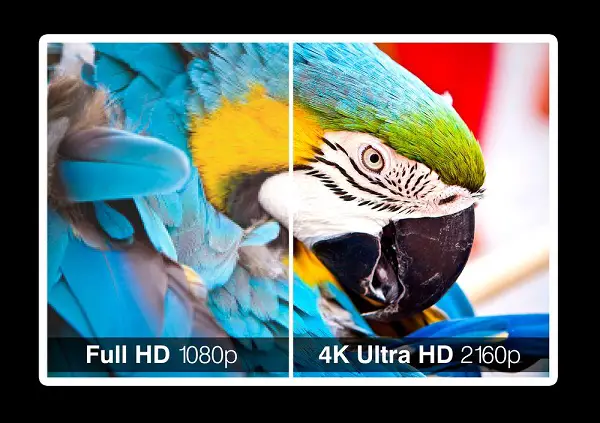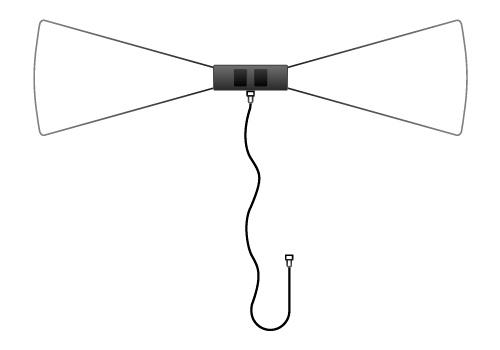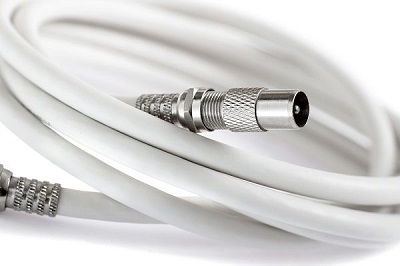We all know that manufacturers must be precise in their language, but that doesn’t mean it ain’t Greek for most people!
Below you’ll find a list of common words used by makers of hardware, software, and streaming content services. I’ll be adding more definitions as time goes on, so don’t hesitate to let me know of your favorite mystery word related to cord cutting.
- What is 4K?
- What is amplification?
- What are antenna dipoles?
- What is antenna gain?
- What is ATSC 3.0?
- What is a bowtie antenna?
- What is a coaxial cable?
- What is a distribution amplifier?
- What is high definition or HD?
- What is insertion loss?
- What is interference?
- What is an indoor antenna?
- What is a log periodic antenna?
- What is a multidirectional antenna?
- What is an omnidirectional antenna?
- What is an outdoor antenna?
- What is a preamplifier?
- What is an RF signal, radio frequency signal, or TV signal?
- What is a rotator or rotor?
- What is a digital tuner?
- What is UHF?
- What is a unidirectional antenna?
- What is VHF?
- What is a Yagi antenna?
What is 4K?
4K refers to a picture resolution of 3840 x 2160 pixels, which is four times as many pixels as full HD. As with HD, being able to realize a 4K picture depends on whether you’re using a 4K-enabled device.

Streaming services are increasingly offering content in 4K; check your subscription plan with your service provider to verify whether you’re receive streaming in 4K.
This system is also known as Ultra HD, which is very similar to 4K but offers slightly less pixels than true 4K.
What is amplification?
Amplification is the act of applying electric current to your antenna coaxial cable, with the goal of improving the signal-to-noise ratio along the cable to boost television reception.
You apply the current by attaching a special device to the coaxial cable, either on the antenna mast itself (preamplifier), or before any splitters you’re using (distribution amplifier).
What are antenna dipoles?
A dipole is an element of an antenna that picks up radio frequency waves traveling from the broadcast tower. The antenna then converts these (vibrating) waves into electric current in order to send these down the coaxial cable to your TV.
On a typical antenna (such as of Yagi type), at least one element is a dipole, while the other elements act in a passive way to focus the received TV signals in order to increase antenna gain.
This isn’t to be confused with a dipole antenna, which is one of the simplest kinds of antennas. The antennas that I review are generally multi-element antennas that consist of one or more such (small) dipole antennas.
What is antenna gain?
Wikipedia defines antenna gain as a key performance number describing, “how well the antenna converts radio waves arising from a specified direction into electrical power.”
Antenna product descriptions often contain this value, expressed as dBi (decibels over isotrope). To get really technical, this refers to an isotropic antenna, which radiates equally well in all directions. So this gain is a ratio of the antenna’s reception power in one direction over that of an ideal, isotropic antenna.
As a consumer you don’t really need to understand the math behind this; just know that among other things, a higher antenna gain increases the likelihood of picking up signals, despite their having relatively lower signal strength due to distance and interference.
What is ATSC 3.0?
Most of us encounter this term in relation to 4K and digital tuners. ATSC 3.0, also known as Next Gen TV, is the latest iteration of digital TV standards set out by the Advanced Television Systems Committee. It’ll deliver new, advanced formats (such as 4K) and generally provide a better broadcast TV experience than we currently have.
There’s a lot to say about this standard, which can’t be expressed in any simple definition but if you want to learn more you can check out this article. What’s important is that if you want to use an OTA antenna, you’ll need an ATSC-compliant tuner in your TV (often just referred to as a “digital tuner”).
As for ATSC 3.0, TVs that are compliant with this standard should start coming out in 2020. ATSC is only applicable for over-the-air, broadcast TV (i.e., only if you’re using an antenna). If you get your TV via streaming or cable, then this standard becomes much less relevant for you.
What is a bowtie antenna?
A bowtie antenna resembles an actual bow tie, which includes two triangular elements that are effective for picking up UHF signals. These days, bowtie antennas are composites of multiple, smaller bowtie antennas that are placed in front of a wide reflector for better focus.

An example of a modern bowtie antenna is the CM-4228HD.
What is a coaxial cable?
A coaxial cable is a copper cable surrounded by an insulating sheath of different materials that both protect the cable from surrounding electromagnetic interference and allows greater conduction of electric current.

In a home, coax cable is often used with TV antennas, as well as with satellite and cable TV. Such cables are efficient data carriers and are easy to install and use.
What is a distribution amplifier?
A distribution amplifier is a type of amplifier designed for overcoming signal loss due to a splitter. You typically place a distribution amplifier indoors (unlike as with a preamplifier, which you place on the antenna mast), either before or after the splitter device. Some splitters are combined amplifiers/splitters, and are AC powered.
See also amplification.
What is high definition or HD?
High definition television (HDTV) is a system providing images in 720p, 1080i, and 1080p resolution, as well as a picture that is wider than that of standard definition TV. It’s broadcast digitally but you need a receiver such as an HD-enabled television to take advantage of the higher resolution offered.
Keep in mind that although today antennas are typically branded as “HDTV antennas,” any TV antenna will pick up digital and HD broadcasts.
HDTV will eventually be superseded by 4K, which will offer four times as many pixels as HD.
What is insertion loss?
Insertion loss is the energy loss that the input port of a device like a television or cable splitter imposes on the signal travelling through a connected cable. This works to slightly reduce the signal’s strength, and is commonly discussed when connecting a coaxial cable to a splitter device.
What is interference?
Interference is a broad term to mean anything that interferes with, or reduces the strength of the over-the-air TV signal you’re getting. Examples of interference include electromagnetic interference from other sources like a nearby cellular telephone tower or the weakening of a signal due to your antenna’s line of sight to towers having to pass through a forest.
Interference can generally be found either outside or inside the home. Amplifying the coax to the TV, or adjusting your antenna’s position and orientation are common ways of overcoming interference.
What is an indoor antenna?
An indoor antenna is a type of antenna typically offering a very compact form for inconspicuous placement in indoor spaces like your living room. Indoor antennas are generally small, delicate, and not weatherproof.
They usually come with a preamplifier in order to overcome typical sources of interference found inside the house, such as thick walls through which TV signals may get considerably weakened.
They’re typically omnidirectional, receiving TV signals from all directions with less gain than a high directional gain antenna (like a Yagi-style outdoor antenna).
What is a log periodic antenna?
Less common in the consumer TV market than in industrial applications, log periodic antennas offer reception over a broad range of frequencies.
While antennas of Yagi-Uda design are optimized for one frequency (and offer better gain for it), log periodic antennas offer lower gain across a broad range of frequencies.
What is a multidirectional antenna?
A multidirectional antenna is a type of antenna that can pick up signals from towers scattered within a wide angle, for example, 180 degrees.
Although multidirectional antennas come in different designs, they typically have wide reflectors with a short or no protruding axis.
Multidirectional antennas aren’t to be confused with omnidirectional ones, as the latter theoretically pick up signals from 360 degrees around.
What is an omnidirectional antenna?
Omnidirectional antennas have 360-degree reception, meaning that at least theoretically, they pick up TV stations at any direction around you.
With this lack of directionality comes a corresponding lack of gain in any particular direction, so omnidirectional antennas are often weak receivers compared with directional antennas that are unidirectional or multidirectional.
Indoor antennas are likely to be omnidirectional rather than directional in any sense, as the confined spaces of indoors generally hinders your ability to point them in any particular direction.
What is an outdoor antenna?
An outdoor antenna is any antenna designed to be installed outdoors. These antennas typically have stronger reception characteristics than indoor ones, since they have less restrictions on size (greater antenna service area) and directionality.
They’re also generally waterproof and sturdier. You have a better chance of picking up a particular station with an outdoor antenna, but this is offset by the effort and time required to install and orient it.
What is a preamplifier?
A preamplifier is any amplification device that boosts signals received by the antenna, and that you attach directly to the mast of an antenna. A preamplifier applies electric current directly to the coaxial cable.
What is an RF signal, radio frequency signal, or TV signal?
An OTA antenna captures radio frequency signals emanating from nearby broadcast towers and converts them into electrical current for you to watch on your television.
The important thing about RF signals is they’re electromagnetic waves that oscillate at a certain frequency. The speed with which they oscillate, and the wave size (i.e., their wavelength), allows them to be classified within the ranges of VHF or UHF frequencies.
What is a rotator or rotor?
A rotor is a device on which you mount both your antenna mast and antenna, and that allows you to rotate the antenna 360 degrees around.
A rotator consists of both a drive unit (on which you install the antenna mast) and a control unit (near your TV), permitting you to change the antenna’s orientation via remote control.
What is a digital tuner?
An ATSC-compliant device built either inside your TV or set-top box, which converts the TV signals received by your antenna into an audio/video format that can be displayed on your TV.
These days, the tuner you’re using is likely to be a digital tuner that converts TV signals into HD for your television.
A TV must have a tuner to be considered a proper television; otherwise, it’s more of a display device to which you’ll need to connect a special converter or set-top box with the tuner in order to watch digital TV.
What is UHF?
In general, the frequency of a broadcast TV signal denotes how fast it’s oscillating and at which wavelength. Ultra high frequency waves are oscillating at a rate of 470 – 960 MHz (for TV).
UHF signals are generally smaller than VHF, and are also used by cellular communications as well as other applications.
With the transition from analog to digital in 2009, many TV stations transitioned from VHF to UHF due to the efficiencies that UHF offers. This is why most (but not all) TV stations today broadcast on UHF.
What is a unidirectional antenna?
Antennas that are unidirectional offer powerful gain in a particular direction, and are ideal for situations where you need focused reception from one tower or a group of towers close by each other.
Unidirectional antennas often feature a long protruding axis that can be aimed in the direction of a station. A popular design of unidirectional antenna is the Yagi-Uda type, an example of which is the RCA ANT751R.
What is VHF?
Very high frequency waves oscillate at a rate of 41 – 250 MHz, and were heavily used for over-the-air TV in the analog days.
Today, many TV stations have switched to UHF broadcasts. Many applications, such as FM radio, still rely on VHF however.
What is a Yagi antenna?
A unidirectional antenna based on the Yagi-Uda design. It typically consists of a long axis that is aimed towards a signal source, and offers strong reception focus in a particular direction.
While offering good reception (generally speaking), Yagi antennas have relatively limited bandwidth when compared with log periodic antennas.
